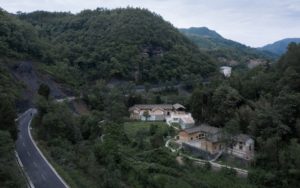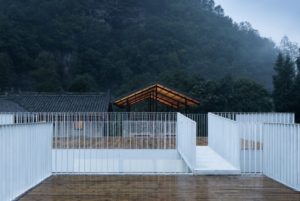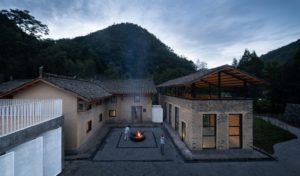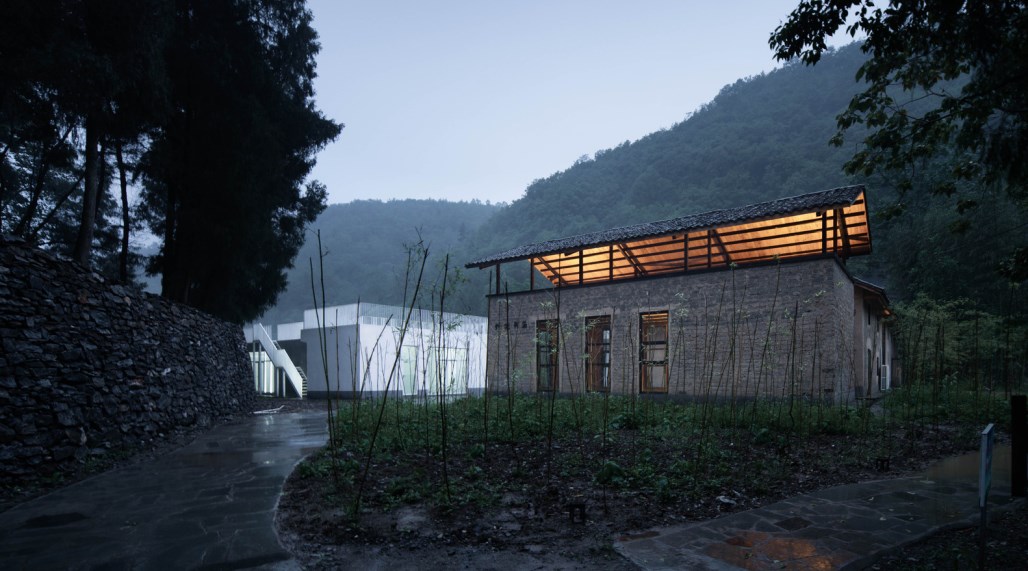In China, Taihang Village is located in the Qinba Mountains, enjoying ideal weather and serene views.
 With the growth of regional tourism, the local government wanted to build a communal place for locals and tourists to share.
With the growth of regional tourism, the local government wanted to build a communal place for locals and tourists to share.
But land available for such construction was extremely limited in this mountainous area, so the architect suggested that they repurpose and renovate some traditional-but-abandoned residences, rather than sprawl into their beautiful surrounding landscape.
The result in the Taihang Village Co-living Space.
Here’s how the designers, f.i.t. Architects, described their approach to this adaptive reuse project:
 Concept: From Introvert to Extrovert
Concept: From Introvert to Extrovert
The courtyards are independent, isolated and surrounded by forest and farmland.
To make the site more public, based on its programs of gathering, dining, and living, the following moves are operated: keep the living spaces in the original layout; demolish the add-on structures; add the multi-purpose spaces and organize a new path integrating the courtyards into an aggregation of the semi-enclosed cluster.
Operation: Refurbishment and New Construction
 To improve the thermal performance and reinforce the structure, the interior and exterior are refurbished while preserving as much details from history.
To improve the thermal performance and reinforce the structure, the interior and exterior are refurbished while preserving as much details from history.
Exteriorly, the new structures use exposed concrete, on which time will leave its trace.
Interiorly, by installing the “box”, it increases the living area and upgrades the HVAC system and sanitary facilities. In addition, high windows and skylights are added to improve the lighting.
Courtyard
The four courtyards after refurbishment kept their original scale and the sense of enclosure where people could gather around the fire.
Photo are courtesy of Houwen Bo and Chao Ma.

